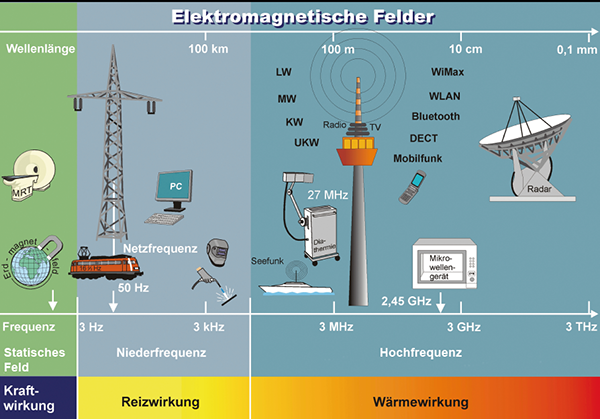Applications and effects - risks and protective measures
Electromagnetic fields (EMF) occur both in natural and human made environments, for example in the form of the terrestrial magnetic field or thunderstorms on one hand and along with electric appliances like welding equipment, electrolysis methods, inductive heating, or communication devices on the other hand. State-of-the-art electric appliances use static, slow, or fast alternating pulsed or continuous fields, with homogeneous or inhomogeneous field characteristics.
Electromagnetic fields consist of an electric and a magnetic component coupled weakly for low-frequency fields and closely for high-frequency fields. As opposed to radioactive radiation, electromagnetic fields (0 Hz to 300 GHz) do not have enough energy to ionise materials or biological matter.

Humans do not have any sensory organs sensitive to EMF, which is why electromagnetic fields can only be described and assessed on the basis of measurement and numeric simulation methods.
Electrical, magnetic, and electromagnetic fields have different biological effects on the human body depending on frequency, modulation, and intensity. However, this does not mean that measurable changes of a field parameter have relevant physiological effects or pose adverse health effects.
Proven effects of electromagnetic fields on humans are comprised of direct biological effects as well as indirect effects. First, direct biological effect include thermal effects by high-frequency EMFs (100 kHz to 300 GHz), like tissue heating through energy absorption in the exposed tissue, and reversible short-term sensory effects like stimulation of excitable cells (e. g. sensory organs, nerves, and muscles) by static and low-frequency fields (0 to 100 kHz). Only if EMF exposure is above a certain level, i. e. sensitivity threshold, sensory effects are noticed. For intermediate frequencies between the low and high ends of the spectrum (100 kHz to 10 MHz), both sensory and thermal effects are prevalent.